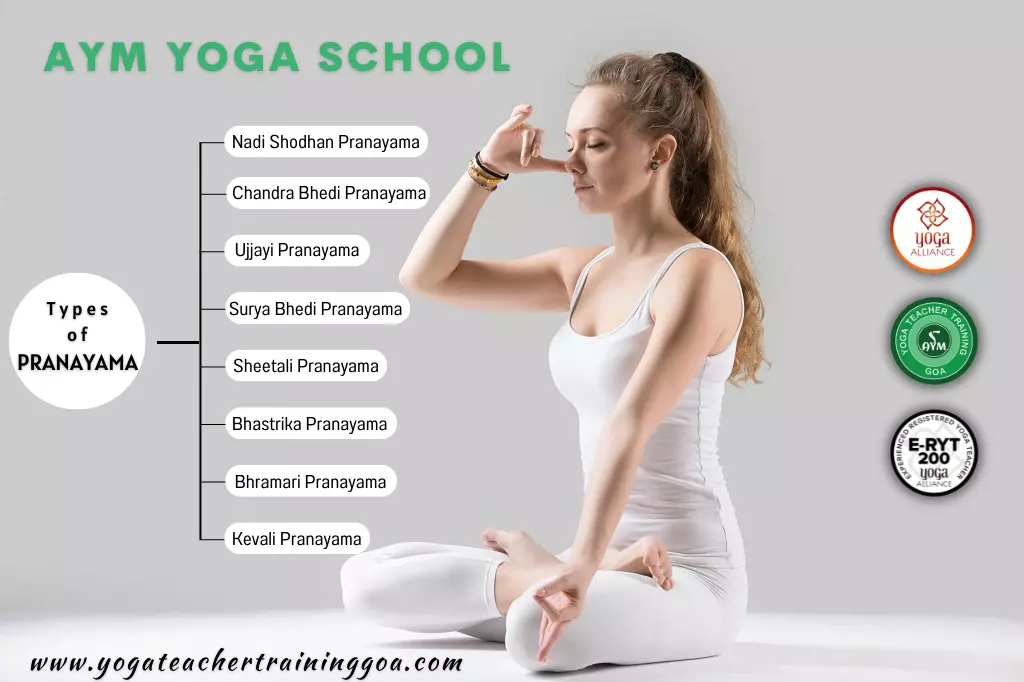
The essential Types of Pranayama
TYPES OF PRANAYAMA: Here is the different type of Yogic breathing (Pranayama). Pranayama is a powerful yogic breathing technique that affects your body and mind. It can give you energy, stimulate or calm your nervous system, strengthen your immune system, and much more!
TYPES OF PRANAYAMA
Nadi Shodhan Pranayama
Nadi means the Psychic channel of our body, similar to our nerve but very subtle, and Shodhan means Purification.
The main aim of this Pranayama is to purify the whole of Nadi’s presence in our bodies.
In the beginning, start with a slow pace, and when you feel more comfortable, you could use this Pranayama with the retention of breath, also known as Kumbhaka.
The Nadi shodhan pranayama helps us remove the toxin in our body. We can also use Pranayama in Meditation.
Surya Bhedi Pranayama (Sun Piercing Pranayama)
Surya Bhedi pranayama is heat-provoking pranayama. It generates heat in the body, which helps to activate the whole nervous system and blood flow in the body.
This Pranayama is especially beneficial for those with low B.P and heart rate, digestive problems, and during wintertime. Surya Bhedi Pranayama is also used to awaken the Kundalini Shakti.

Chandra Bhedi Pranayama (Cooling Pranayama or Moon piercing)
The functioning and mechanism of Chandra Bhedi Pranayama are almost the opposite of Surya Bhedi.
Chandra means calmness and coolness; we can also use it as a counter after generating excessive heat in the body.
The main aim of this Pranayama is to cool and calm our bodies and mind.
Instead of using our right in this Pranayama, we use our left nostrils for breathing. It also helps to control anger and stress.
————————-
Learn more Types of Pranayama in our 200-hour Yoga Teacher Training program
————————-
Ujjayi Pranayama
In Ujjayi Pranayama, a very subtle snoring sound is created like a child while inhaling through the contracting vocal cord and holding the breath between the heart.
Ujjayi in Sanskrit means undefeated or victorious.
Sheetali Pranayama
Suck the air through the tongue, retain the air inside with Kumbhaka then exhale with the nostrils.
Sheetali is also cooling Pranayama which produces calmness and stability in the body and is beneficial for those who suffer from Kapha and pitta disorder.
Sheetali means “cool.”
Bhastrika Pranayama
Inhale and exhale forcefully repeatedly at the same ratio through the nostrils filling and emptying the abdomen like a bellow of blacksmith 10-15 times or with your capacity and retain the breath after exhalation.
This practice produces heat in the body, which helps remove the toxin from the body.
Bhramari Pranayama
In Sanskrit, Bhramar means vibration (like a bumblebee). The main effect of Bhramari pranayama is calming the mind by creating a vibrating sound from the mouth and, at the same time, closing both ears with thumbs.
Vibration reverberates the whole skull, which significantly impacts our minds and intellect.
This practice helps to improve internalizing consciousness.
Kevali Pranayama
Kevali Pranayama is also known as kevali Kumbhaka. In this Pranayama, we need to concentrate on our breathing when inhaling and raise the focus from the mooldhara chakra (presented at the bottom of the spine) to nasikagra (nose tip).
When exhaling, feels the breath from top to bottom on the spine. During this process, the focus passes after the middle of the spine behind the heart. We need to hold our breath when the focus is present at the Anahata chakra.
This state is called Kevali Kumbhaka or Kevali Pranayama.
